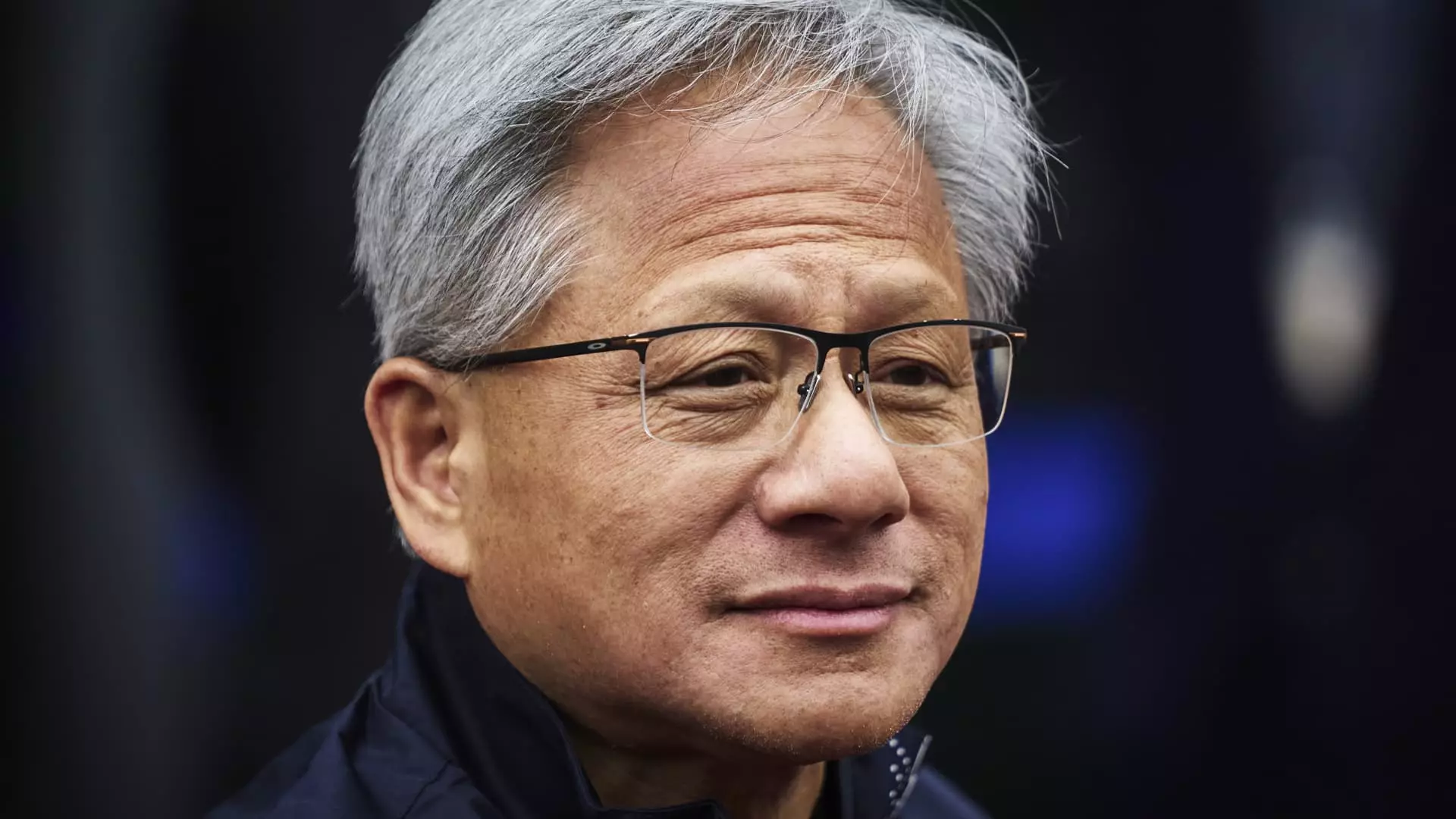As Nvidia gears up to announce its fourth-quarter financial results, the anticipation is palpable within the investing community. Over the past couple of years, the technology giant has experienced a meteoric rise in its sales, largely propelled by its critical role in the burgeoning artificial intelligence (AI) sector. With analysts projecting sales to hit a staggering $38 billion for the quarter that ended in January—marking an astounding 72% increase year-over-year—Nvidia is set to conclude a fiscal year characterized by dramatic growth. This trend is particularly notable considering that Nvidia’s revenue has more than doubled for two consecutive years, underscoring the company’s dominance in the AI landscape.
The demand for Nvidia’s graphics processing units (GPUs) has skyrocketed, primarily due to their necessity in designing and executing AI services. Nvidia’s GPUs serve as the backbone for many AI applications, including sophisticated systems like OpenAI’s ChatGPT, making them indispensable for companies looking to remain competitive in an AI-driven market. Despite a nearly 478% increase in stock price over the last two years, questions loom as investors express concerns regarding Nvidia’s long-term prospects.
Investor Sentiment and Market Dynamics
Recent months have witnessed a stagnation in Nvidia’s stock price, with it hovering at levels similar to those from last October. This lull has sparked cautious scrutiny from investors regarding the future trajectory of the company, especially in light of spending cutbacks by its prominent customers like Microsoft, Google, and Amazon. A substantial portion of Nvidia’s revenue is attributed to a small number of clients who deploy immense server farms, colloquially referred to as “hyperscalers.” These companies are responsible for procuring Nvidia’s chips in significant quantities, making any fluctuations in their procurement strategies a cause for concern.
A notable instance of this occurred when reports surfaced indicating that Microsoft had begun scaling back its commitments to private data center operators. This news reverberated throughout the market, leading to a noteworthy 4% drop in Nvidia’s stock price. Even though Microsoft has reassured stakeholders about its plans to invest $80 billion in infrastructure by 2025, such uncertainties can still disrupt investor confidence.
In addition to managing investor expectations, Nvidia also faces increased competition, particularly in the AI chip space. Companies like AMD are venturing into the GPU market, and some hyperscalers are even developing proprietary chips aimed at decreasing dependency on Nvidia products. This diversification of suppliers may threaten Nvidia’s monopolistic hold on cutting-edge AI hardware, challenging its revenue growth prospects.
Moreover, the rise of startups such as DeepSeek, which has introduced a new AI model that claims to operate efficiently without extensive reliance on Nvidia’s GPUs, complicates matters further. By demonstrating that high-quality AI models can be trained without expensive hardware, DeepSeek raises a pivotal question about Nvidia’s future market demand. This development has already impacted Nvidia’s stock significantly, as investors reacted to a possible oversupply in AI infrastructure needs.
CEO Jensen Huang’s Vision
As these challenges mount, Nvidia CEO Jensen Huang is expected to address these concerns directly in the upcoming earnings call. Huang has repeatedly emphasized the “scaling law” introduced by OpenAI, which posits that AI models improve with increased data and computing power. Huang argues that the crux of future AI innovation lies not only in creating AI models but also in deploying them to reach broader audiences. This notion positions Nvidia as a pivotal player in the continued expansion of AI, arguing that even with advancements like DeepSeek’s model, demand for robust GPU capacity will remain high.
While AI models may be trained only a limited number of times, the operational requirements for deploying these models can skyrocket, necessitating additional Nvidia chips. Huang’s perspective is critical as he may attempt to alleviate fears surrounding perceived market saturation and reinforce the narrative that the AI revolution is far from reaching its peak.
While Nvidia stands at a crossroads, grappling with both internal and external pressures, the company’s long-term prospects remain intriguing. The potential for continuous growth in AI applications and infrastructure suggests that Nvidia, despite facing headwinds, might yet find ways to thrive. The urgency for more compute power during the inference phase could bolster future demand for Nvidia’s offerings.
The journey ahead will undoubtedly be influenced by Nvidia’s ability to adapt to shifting market dynamics, outpace competitors, and reassure investors of its strategic vision. As the company prepares to unveil its latest financial results, the eyes of the market will remain fixed on how it plans to navigate a landscape filled with both remarkable opportunities and daunting challenges.


Leave a Reply